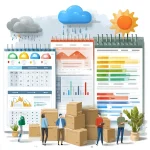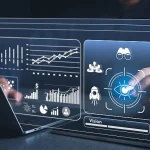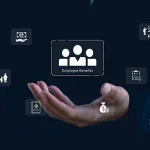Thousands of hours of irreplaceable audio recordings are degrading right now in archives, studio storage rooms, and private collections around the world. Magnetic tape deteriorates chemically even when stored properly, losing high frequencies and developing sticky shed syndrome that makes playback impossible without restoration. Vinyl acetate discs warp and develop surface noise. Wax cylinders literally crumble with age. The race to digitize these recordings before they become unplayable grows more urgent each year, but the technical and logistical challenges involved make preservation far more complex than simply pressing record on modern equipment.
The problem extends beyond historical archives to commercially valuable sound libraries built over decades by studios and effects houses. These collections contain unique recordings that can’t be recreated—specific microphone placements capturing machinery that no longer exists, ambient recordings from locations that have since changed, performance sounds from instruments or equipment no longer available. The sonic character of these vintage recordings often proves more desirable than modern alternatives, making their preservation not just culturally important but commercially valuable. Yet many institutions and companies lack the resources, expertise, or urgency to properly digitize their holdings before deterioration makes recovery impossible or prohibitively expensive.
Discover insights that matter—check out this related post and stay ahead today!
The Technical Minefield of Audio Transfer
Digitizing old recordings requires far more than connecting a tape deck to a computer. Each format demands specialized playback equipment that’s increasingly rare as the technology becomes obsolete. Playing a quarter-inch reel-to-reel tape requires knowing the proper speed, track configuration, and equalization curve used during recording—details often lost to time when documentation is missing. Using incorrect playback settings can make the audio sound dramatically wrong or even damage fragile tape during transfer. Finding functional vintage playback equipment presents its own challenge as working machines become scarce and technicians who can maintain them retire without passing on their expertise.
The condition of source materials varies wildly and often isn’t apparent until playback begins. Tape that looks fine might shed oxide coating onto playback heads within seconds, requiring immediate cleaning to prevent permanent damage to both the tape and equipment. Some tapes need baking in temperature-controlled ovens to temporarily restore playability—a delicate process where incorrect temperature or timing can destroy the recording entirely. Discs might have damage, mold growth, or manufacturing defects that cause skipping or distortion. Each problem requires specific techniques and sometimes multiple transfer attempts using different approaches before achieving acceptable results.
Audio degradation rarely affects all frequencies equally, complicating the restoration process. Tapes typically lose high-frequency content first, making cymbals and sibilance sound dull while low and mid frequencies remain relatively intact. Vinyl records accumulate surface noise and clicks that mask the original recording. Determining how much restoration to apply involves subjective judgments about balancing historical accuracy against modern listening expectations. Over-processing can strip away the authentic character that makes vintage recordings valuable, while insufficient cleanup leaves distracting artifacts that limit usability. Finding this balance requires both technical skill and educated ears that understand the source material’s original context.
Metadata and Cataloging Complexity
The greatest challenge in audio preservation often isn’t technical—it’s organizational. A reel of tape sitting in a box might lack any identification beyond a cryptic handwritten label or production number that means nothing without supporting documentation. Determining what’s actually on the recording requires playing it through, transcribing contents, and researching context to identify sources, dates, and recording circumstances. This detective work consumes enormous time, especially for large collections containing hundreds or thousands of individual items. Many valuable recordings remain unused simply because nobody knows what they contain or how to find them again after initial digitization.
Creating useful metadata requires decisions about categorization systems, naming conventions, and what information to capture. Should recordings be tagged by source location, recording date, equipment used, sonic characteristics, or potential usage scenarios? Different users need different access points—a sound designer searching for specific effect types needs different organization than a historian researching recording techniques from a particular era. Comprehensive metadata that serves multiple purposes requires substantial effort during cataloging, but inadequate metadata renders digitized audio nearly as inaccessible as it was in physical form. Professional sound libraries that understand these challenges, like those you can go here to explore, demonstrate how proper organization transforms raw recordings into genuinely usable resources.
Rights management adds another layer of complexity. Old recordings often have unclear ownership or licensing status, especially when created under work-for-hire arrangements decades ago using handshake agreements rather than formal contracts. Performers, recording engineers, equipment owners, and the entities that commissioned recordings might all have legitimate claims to various rights. Using digitized audio commercially or even archiving it publicly may require clearing rights that prove impossible to establish definitively when key parties are deceased or unreachable. Many institutions maintain extensive digitized archives that can’t be shared publicly because rights questions remain unresolved.
Economic Realities and Funding Challenges
Professional audio digitization and restoration costs substantially more than most people anticipate. Transfer alone runs $50-200 per hour of source material depending on format and condition, before any restoration work begins. Proper restoration adds additional expense—noise reduction, click removal, equalization, and gap filling consume skilled labor hours that quickly multiply across large collections. Adequate metadata creation essentially doubles the project timeline compared to simple file conversion. A modest collection of 500 hours of tape can easily require $100,000 or more for complete professional preservation, pricing out smaller institutions and private collectors who recognize the value but can’t justify the investment.
Grant funding for audio preservation exists but remains limited and competitive. Cultural institutions compete for resources allocated primarily toward visual materials, with audio holdings often treated as secondary priorities despite their historical significance. Commercial entities struggle to justify preservation expenses when uncertain about future revenue potential from restored recordings. The result is that preservation efforts proceed slowly and selectively, focusing on materials with obvious value while marginal holdings continue degrading. This triage approach means valuable recordings with less apparent commercial potential may be lost simply because nobody could fund their preservation during the limited window when transfer remained technically feasible.
Building Sustainable Preservation Programs
Successful audio preservation requires long-term commitment beyond initial digitization. File formats become obsolete requiring periodic migration to current standards. Storage media fails necessitating backup verification and replacement. Metadata standards evolve prompting catalog updates. These ongoing maintenance costs often get overlooked during project planning, leading to digitized archives that become inaccessible again within a decade as technology moves forward. Sustainable preservation incorporates regular assessment, systematic backup verification, and proactive migration planning that treats digitization as the beginning of perpetual stewardship rather than a completed project.
Collaboration and shared infrastructure help manage preservation costs. Multiple institutions pooling resources can afford specialized equipment and trained personnel that individual organizations couldn’t justify. Standardized workflows and metadata schemas make materials more interoperable across collections. Open-source tools reduce software licensing expenses while community development improves capabilities faster than proprietary solutions. These collaborative approaches represent the most realistic path toward preserving the breadth of audio heritage before physical deterioration forecloses the option entirely.
Spotlight on success—see our featured post for trends you can’t afford to miss.







